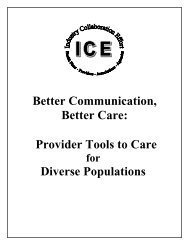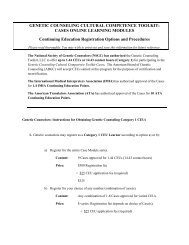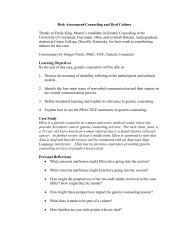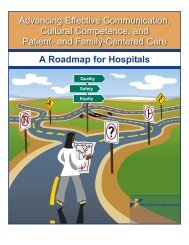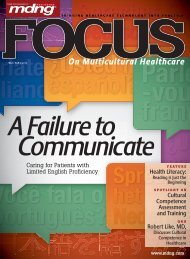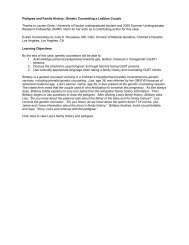making the business case for culturally and linguistically appropriate ...
making the business case for culturally and linguistically appropriate ...
making the business case for culturally and linguistically appropriate ...
Create successful ePaper yourself
Turn your PDF publications into a flip-book with our unique Google optimized e-Paper software.
APPENDIX KTraditional Safety Net TelephonicInterpreting Project—Dual Head SetAnd H<strong>and</strong> Set InterpretationL.A. Care Health PlanCLAS St<strong>and</strong>ards Met: 1 <strong>and</strong> 4-6See page 12 <strong>for</strong> list of CLAS St<strong>and</strong>ardsISSUE. Language needs of limited English proficiency (LEP) patients enrolled in L.A.Care Health Plan (L.A. Care) exceeded available licensed bilingual providers. As a result,untrained staff members, family members <strong>and</strong> children were being used <strong>for</strong> languageinterpretation during medical visits. Research indicates that sometimes family members,children <strong>and</strong> friends may: 1) not give <strong>the</strong> patient a provider's complete explanation, 2)potentially be embarrassed to admit <strong>the</strong>y do not underst<strong>and</strong> what is being said, 3) find <strong>the</strong>nature of <strong>the</strong> conversation embarrassing, 4) not agree with <strong>the</strong> provider, <strong>and</strong> 5)miscommunicate <strong>the</strong> patient’s message, preferring that <strong>the</strong> provider hear <strong>the</strong>ir version of<strong>the</strong> situation. In addition, family members <strong>and</strong> child interpreters may lack underst<strong>and</strong>ing of<strong>the</strong> medical <strong>and</strong> non-medical vocabulary, whe<strong>the</strong>r in English or <strong>the</strong>ir own language.DISCUSSION. L.A. Care Health Plan (L.A. Care) is a public health maintenanceorganization serving more than 750,000 people in Los Angeles County. L.A. Carecontracts with more than 10,000 health care providers annually, health plans, IndependentProvider Associations (IPA’s) <strong>and</strong> Medical Groups, community clinics <strong>and</strong> hospitals. Thehealth plan serves large populations with limited English proficiency. More than 55percent of patients prefer a language o<strong>the</strong>r than English, including Spanish (45 percent ofenrollees), Cantonese, Korean, M<strong>and</strong>arin <strong>and</strong> 27 o<strong>the</strong>rs.In 2003, L.A. Care developed <strong>and</strong> implemented <strong>the</strong> Traditional Safety Net TelephonicInterpreting Project to eliminate language barriers within <strong>the</strong> patient-provider relationship<strong>and</strong> to reduce errors in medical language interpretation. The project targeted L.A. Care’snetwork of county <strong>and</strong> community clinics <strong>and</strong> provider groups within Sou<strong>the</strong>rn Cali<strong>for</strong>nia.The purpose of <strong>the</strong> project was to assist LEP patients in communicating with <strong>the</strong>irproviders, while reducing <strong>the</strong> administrative time involved in obtaining interpretingservices. When using this system, providers <strong>and</strong> patients need not pass a telephone orheadset back <strong>and</strong> <strong>for</strong>th nor use a speaker phone. Providers <strong>and</strong> patients accessed languageservices using telephonic dual headsets or h<strong>and</strong>sets when a bilingual health care provideror on-site interpreter was not available. The h<strong>and</strong>/headsets are compatible with mosttelephone systems.L.A. Care made equipment, training, <strong>and</strong> technical support available to its participatingproviders at no cost. The dual h<strong>and</strong>set equipment itself was priced at approximately $14 perunit, depending on <strong>the</strong> model <strong>and</strong> make of phone <strong>and</strong> type of h<strong>and</strong>set needed. In addition, alimited number of dual headsets assisted by <strong>the</strong> use of high quality amplifiers wereimplemented in County <strong>and</strong> community clinics which had a need <strong>for</strong> h<strong>and</strong>s freecommunication with patients. The price per unit <strong>for</strong> this model was approximately $178 per54



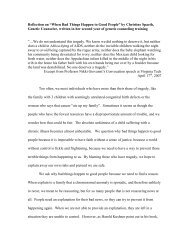
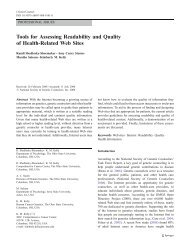

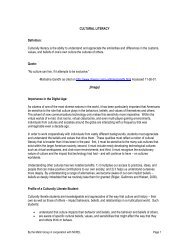
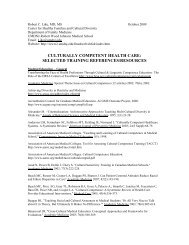

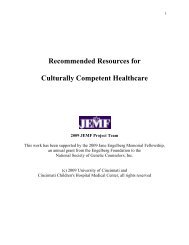
![Breaking Bad News PPT[1] - Genetic Counseling Cultural ...](https://img.yumpu.com/35003134/1/190x146/breaking-bad-news-ppt1-genetic-counseling-cultural-.jpg?quality=85)
